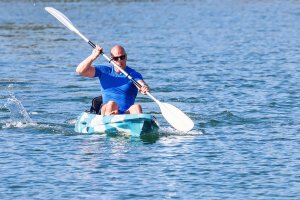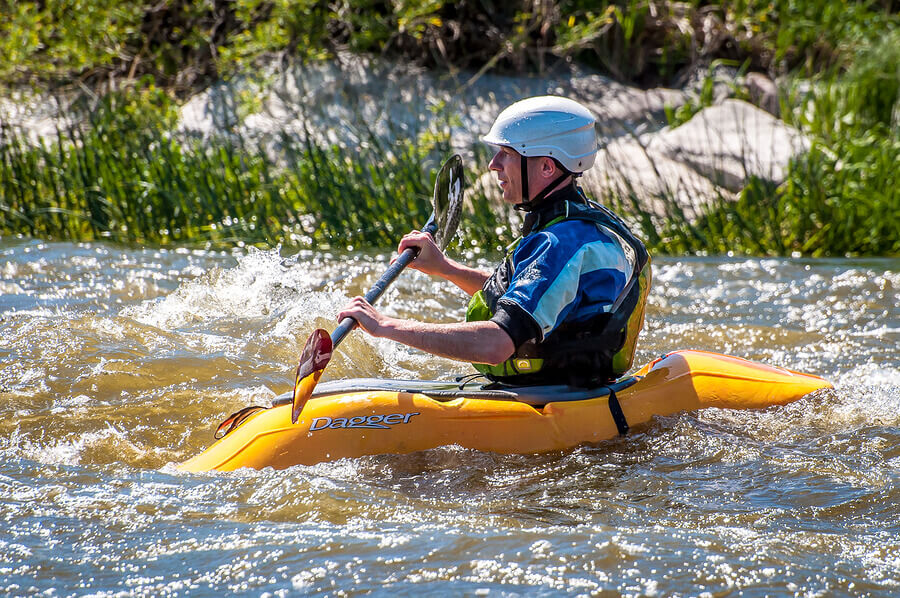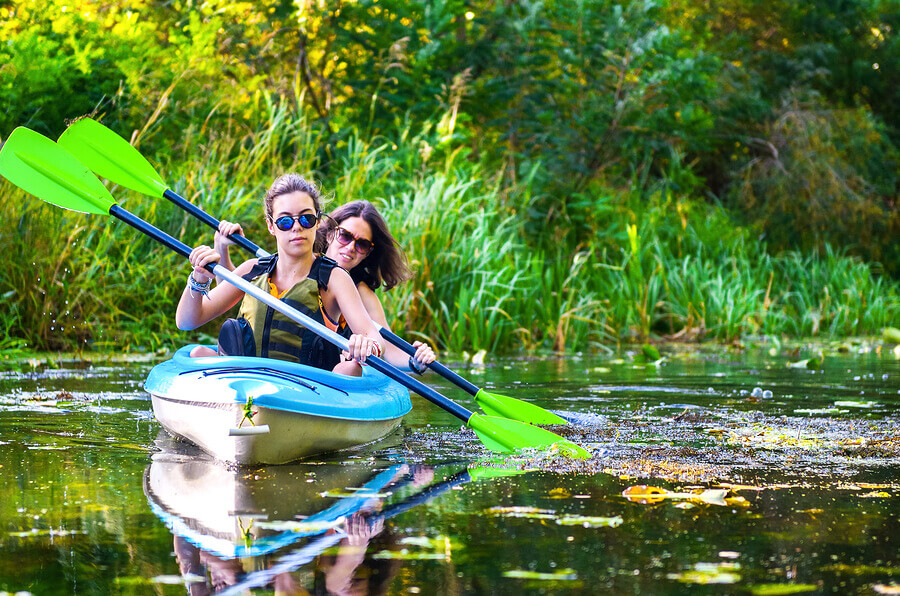Recreational Sports: Canoeing and Kayaking

We often think that canoeing or kayaking is only for professionals that make big investments for all the equipment, but they’re actually great recreational sport options. In our post today read some of our reflections on these two water sports.
Canoeing and kayaking: two great recreational sport options
One of the biggest advantages that these sports have to offer might very well be the fact that there are many ways to practice them. If you simply enjoy sports or just want to have a good time while staying healthy, the best option is practicing on calm water.
For the adventure-seekers, whitewater might be more tempting or if you’re into group sports, try rafting. Rafting takes participants through rough waters, which normally have obstacles. It’s a popular activity in touristy locations.
Or, you can also consider lesser-known, but extremely fun, kayak sports. Some examples include kayak polo, which is a team sport that uses goals and a ball. Or, kayak surf is another option where participants ride waves– oar included.
As you can see, the possibilities are plentiful. One of the biggest advantages of these kinds of recreational sports is that they can include all ages and physical conditions.
Equipment
We mentioned earlier that canoeing or kayaking might seem an expensive sport, but looks can be deceiving. But of course, having your own equipment— kayak or canoe, oars, life-jackets, helmet, clothing, etc– will sum up to a small fortune.

But many institutions, such as nautical clubs, offer rental equipment to their members. The rentals allow you to try different styles and help you determine if you like it enough to make an investment. Try them for yourself!
Benefits of recreational canoeing or kayaking
On top of the benefits we mentioned earlier, these sports provide great exercise. Below, we’ve prepared a list of the biggest advantages that they offer participants:
Great exercise for muscles
Canoeing and kayaking is good exercise, especially for the upper body. It helps strengthen muscles, increasing their endurance and power. The action of pulling and pushing that rowing implies requires shoulder, chest and arm strength as well as a solid back.
In addition, abdominal muscles have to work hard as well to keep the body steady. Legs also get a good workout for the same reason, especially in canoeing because the rower has to kneel.
These sports basically boil down to a combination of different gym workouts that use the rowing machine and dumbbells. They’re optimal workouts for your cardiovascular system.
In canoeing, muscles have to work almost continuously which means the body needs to keep oxygen levels high throughout the entire session. As a result, your heart rate increases, helping your heart work more efficiently in the long run.
There are other benefits that these two water sports have in store as well: higher fat burn, the body’s systems, such as the digestive system, work more efficiently, improved joint and bone health and faster metabolism.

Positive mental benefits
Lastly, recreational canoeing and kayaking also offer the same benefits as any other sport. These include a release of endorphins, which leads to better general well-being and mood, tension release and stress reduction.
Furthermore, staying in contact with nature on a regular basis also helps you make the most of the benefits of outdoor sports. Among many things, these include improved self-esteem and emotional health.
There’s no question about it: practicing recreational canoeing or kayaking could be a wonderful way of improving your overall quality of life. If you have options nearby, don’t miss out!
We often think that canoeing or kayaking is only for professionals that make big investments for all the equipment, but they’re actually great recreational sport options. In our post today read some of our reflections on these two water sports.
Canoeing and kayaking: two great recreational sport options
One of the biggest advantages that these sports have to offer might very well be the fact that there are many ways to practice them. If you simply enjoy sports or just want to have a good time while staying healthy, the best option is practicing on calm water.
For the adventure-seekers, whitewater might be more tempting or if you’re into group sports, try rafting. Rafting takes participants through rough waters, which normally have obstacles. It’s a popular activity in touristy locations.
Or, you can also consider lesser-known, but extremely fun, kayak sports. Some examples include kayak polo, which is a team sport that uses goals and a ball. Or, kayak surf is another option where participants ride waves– oar included.
As you can see, the possibilities are plentiful. One of the biggest advantages of these kinds of recreational sports is that they can include all ages and physical conditions.
Equipment
We mentioned earlier that canoeing or kayaking might seem an expensive sport, but looks can be deceiving. But of course, having your own equipment— kayak or canoe, oars, life-jackets, helmet, clothing, etc– will sum up to a small fortune.

But many institutions, such as nautical clubs, offer rental equipment to their members. The rentals allow you to try different styles and help you determine if you like it enough to make an investment. Try them for yourself!
Benefits of recreational canoeing or kayaking
On top of the benefits we mentioned earlier, these sports provide great exercise. Below, we’ve prepared a list of the biggest advantages that they offer participants:
Great exercise for muscles
Canoeing and kayaking is good exercise, especially for the upper body. It helps strengthen muscles, increasing their endurance and power. The action of pulling and pushing that rowing implies requires shoulder, chest and arm strength as well as a solid back.
In addition, abdominal muscles have to work hard as well to keep the body steady. Legs also get a good workout for the same reason, especially in canoeing because the rower has to kneel.
These sports basically boil down to a combination of different gym workouts that use the rowing machine and dumbbells. They’re optimal workouts for your cardiovascular system.
In canoeing, muscles have to work almost continuously which means the body needs to keep oxygen levels high throughout the entire session. As a result, your heart rate increases, helping your heart work more efficiently in the long run.
There are other benefits that these two water sports have in store as well: higher fat burn, the body’s systems, such as the digestive system, work more efficiently, improved joint and bone health and faster metabolism.

Positive mental benefits
Lastly, recreational canoeing and kayaking also offer the same benefits as any other sport. These include a release of endorphins, which leads to better general well-being and mood, tension release and stress reduction.
Furthermore, staying in contact with nature on a regular basis also helps you make the most of the benefits of outdoor sports. Among many things, these include improved self-esteem and emotional health.
There’s no question about it: practicing recreational canoeing or kayaking could be a wonderful way of improving your overall quality of life. If you have options nearby, don’t miss out!
All cited sources were thoroughly reviewed by our team to ensure their quality, reliability, currency, and validity. The bibliography of this article was considered reliable and of academic or scientific accuracy.
- Carme Adell I Argiles. Piragüismo inclusivo para todos. Real Federación Española de Piragüismo. https://rfep.es/wp-content/uploads/2018/03/RFEP-Piraguismo-inclusivo-para-todos_webabril2014.pdf
- Manuel Isorna Folgar; Fernando Alacid Cárceles; Juan José Román Malgas. 2014. Entrenamiento en piragüismo de aguas tranquilas.
This text is provided for informational purposes only and does not replace consultation with a professional. If in doubt, consult your specialist.








